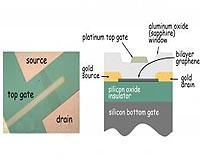 |
New York NY (SPX) Jun 12, 2009 Micromem Technologies through its wholly owned U.S. based subsidiary Micromem Applied Sensor Technologies has announced the successful integration of its patented magnetic sensor in a unique mining application. Designed to rapidly identify mineral constituents in drill core samples as they emerge from the earth, this patent pending instrument provides a significant business opportunity for MASTInc to work with pre-production mineral exploration companies. According to a Frost and Sullivan report this represents a significant market opportunity worth an estimated US$500M worldwide. "We expect to transform traditional mineral exploration from an incredibly expensive process and something of a gamble to a more cost-effective and reliable undertaking," says Steven Van Fleet, president of MASTInc, who anticipates partner discussions to be finalized this summer with plans to deploy field evaluation units within the next 12 months. "Rather than using models, array sensor readings or personal expertise to decide where to make a series of test holes, geologists can now utilize this instrument to rapidly access the mineral makeup of the core samples as soon as they are extracted. We believe we have eliminated the time-consuming and expensive guesswork." Traditionally, geologists are forced to visually evaluate core samples removed from the drill rig for signs of mineral patterns that would indicate that the target minerals - gold, platinum, copper or others - are in the area. Samples are sent to third party certified assaying companies to accurately determine the mineral constituents in the core samples, with information returned in two to four months or in some cases longer. Geologists then decide to either continue the drill program or abandon the targeted area and move the equipment and personnel to the next probable area. Waiting for information and deploying labor and equipment in rugged and sometimes harsh environments adds to the significant expense of each project. "The MASTInc instrument provides immediate feedback about the presence of a specific mineral or compound constituent in the core samples," explains Van Fleet. "At the heart of this instrument is the patented Micromem magnetic sensor, which combined with a novel data acquisition strategy makes it possible to not only find the needle in the hay stack, but to also identify what made the needle." The highly sensitive, small, and precision-oriented MASTInc sensor design passes over the core sample, injecting magnetic energy into the core and receives back a frequency-rich response that is a combined signature of the mineral/constituent makeup of the core sample and the inevitable signal noise. MASTInc's patent on the mining sensor includes a unique signal processing strategy that allows geologists to identify, characterize, and compartmentalize the signal noise. More importantly, the instrument identifies and extracts the unique frequency signature of individual mineral/constituents from the full spectrum frequency of the core sample. It is not designed to replicate the level of accuracy regarding constituent analysis as provided by a third party assay company, rather to provide highly accurate, fast and cost effective onsite analysis. "The development of this instrument is consistent with MASTInc's business plan to remain focused on creating unique magnetic sensors and forging partnerships with companies that have deep domain expertise in a variety of market verticals," says Van Fleet, noting the company's additional applications in computer technology, medical devices, security, defense and oil sensors. "As a result, we are able to drive revenue opportunities associated with these unique applications." Van Fleet anticipates that this new application will greatly accelerate the exploration process and eliminate hundreds of millions of dollars associated with pre-production mineral exploration. "MASTInc is now actively working with prospective partners that want to leverage our achievements in magnetic sensor development," says Van Fleet. "With two patented, market-ready innovations - the sensor array and the signal processing - we have the tools. Knowledgeable exploration partners will be positioned to leverage these assets and drive successful product development." Share This Article With Planet Earth
Related Links Micromem MASTInc Powering The World in the 21st Century at Energy-Daily.com
 Bilayer Graphene Gets A Bandgap
Bilayer Graphene Gets A BandgapBerkeley CA (SPX) Jun 11, 2009 Graphene is the two-dimensional crystalline form of carbon, whose extraordinary electron mobility and other unique features hold great promise for nanoscale electronics and photonics. But there's a catch: graphene has no bandgap. "Having no bandgap greatly limits graphene's uses in electronics," says Feng Wang of the U.S. Department of Energy's Lawrence Berkeley National Laboratory, where ... read more |
|
| The content herein, unless otherwise known to be public domain, are Copyright 1995-2009 - SpaceDaily. AFP and UPI Wire Stories are copyright Agence France-Presse and United Press International. ESA Portal Reports are copyright European Space Agency. All NASA sourced material is public domain. Additional copyrights may apply in whole or part to other bona fide parties. Advertising does not imply endorsement,agreement or approval of any opinions, statements or information provided by SpaceDaily on any Web page published or hosted by SpaceDaily. Privacy Statement |